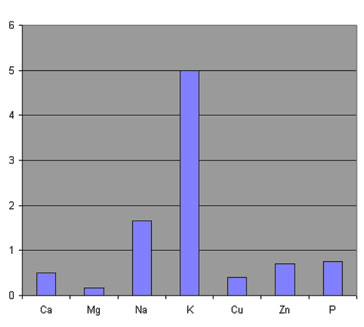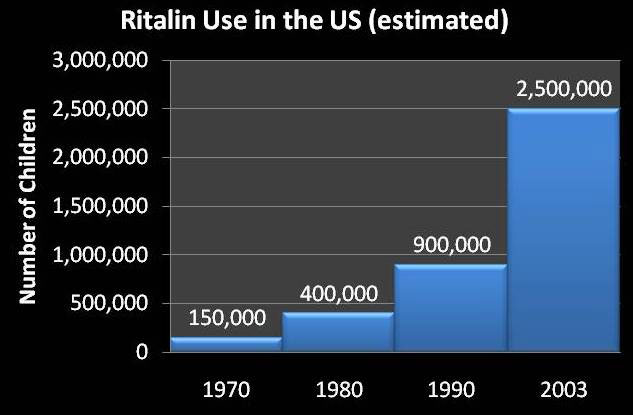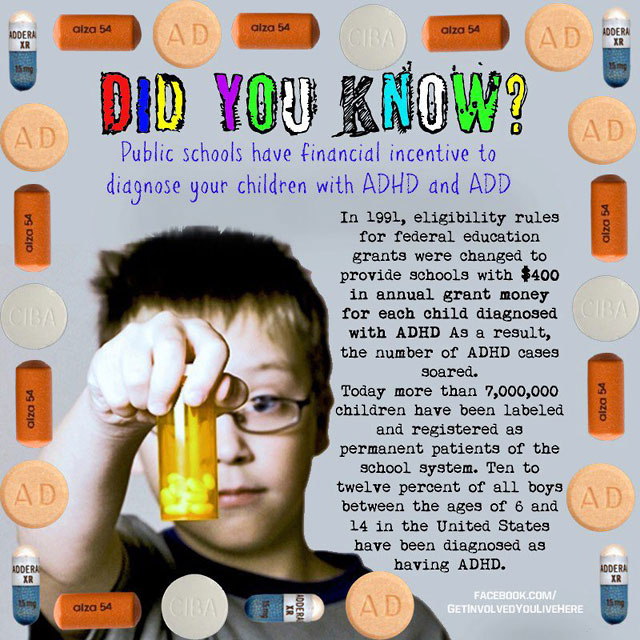Update: 20 April 2024
The Ritalin Paradox
Author: Rick Malter, Ph.D.
A Psychophysiological Perspective on LD/ADHD
Since 1996, the amount of precriptions for psychotropic drugs to affect children's behavior has increased exponentially.

A 1996 a Newsweek magazine cover article asks, "Are We Overmedicating Our Kids?" The exposé emphasized how quick doctors are to prescribe dangerous drugs to children.
Historically, the "calming" effect of Ritalin (Methylphenidate) on hyperactive children has been considered to be a clinical paradox because Ritalin is a stimulant drug. It has puzzled professionals how a stimulant drug can have a calming behavioral effect on children and adolescents with ADHD.
Note: Ritalin is just one brand name for methylphenidate. Sustained or extended-release formulas of methylphenidate are sold as Ritalin SR, Ritalin LA, Metadate ER, Metadate CD, Methylin ER, and Concerta.
An explanation of this classical clinical paradox effect may be found in the hair trace mineral analysis (hTMA) profiles of many LD/ADHD children. Their hair hTMA profiles reveal a very consistent pattern that shows low levels of calcium and magnesium and higher levels of sodium and potassium. In addition, it is also noted that the hTMA ratio of sodium to potassium (Na/K) is ‘inverted,’ i.e. it is below the ideal ratio of 2.4/1. The more this ratio inverts (i.e., Na/K = 0.6), the more likely that ADHD symptoms will be observed in the individual. The hTMA Na/K ratio may be interpreted in terms of the psychophysiological aspects of the stress response; in particular, the adrenal part of the sympathetic response.

Graph shows hTMA pattern indicating ADHD Hyperactivity. In this example, the ratio of sodium to potassium (Na/K) is inverted.
This inverted ratio of Na/K may be helpful in explaining why a stimulant drug like Ritalin would have a calming effect on hyperactive children and adolescents. Ritalin does, indeed, have a stimulating effect on these children, but its stimulating mechanism is neuroendocrine and biochemical, not behavioral. More specifically, its stimulating effect is on the adrenal glands and the retention of sodium in the tissues relative to potassium. It is critical for normal cellular functioning that sodium and potassium (Na and K) be in balance for the optimal operation of the Na/K pump at the cellular level. It is also critical for efficient neurotransmissions that there be a proper balance between sodium and potassium (Na and K) for neuronal conductance.
The hTMA data on many ADHD children suggest that the effect of Ritalin is to temporarily normalize the ratio of Na/K in the tissues by the medication's stimulation effect on weak adrenal glands. When this temporary rebalancing of the Na/K ratio occurs, there is a tendency towards normalization of cellular metabolism and neurotransmissions. However, this rebalancing effect is only temporary and when the medication wears off, the weak adrenal glands are not capable of maintaining the proper balance of sodium to potassium (Na/K). Sodium levels relative to potassium drop again and produce the characteristic inversion of the Na/K ratio, and ADHD symptoms reappear. A rebound effect often occurs when the drug's effect wears off. Prolonged use of stimulant drugs usually will result in the loss of magnesium and zinc from cell and tissue storage so that a chronic magnesium deficiency is induced in many children taking these stimulant drugs. The zinc deficiency that also occurs will stunt growth in general and, as recent research has shown, the effect of stimulant drugs that induce zinc deficiency also stunts brain growth.
Nutrition-based therapeutic option for maintaining calm behavior.
If the normal balance of sodium to potassium (Na/K) can be maintained for longer periods of time, then the hyperactive behaviors would be calmed for much longer periods of time. hTMA profiles suggest several ways in which a more permanent balance of Na/K may be achieved. These mechanisms involve:
- Calcium and copper supplements to lower the tissue potassium level and balance the sodium level.
- Raising sodium levels by stimulating weak adrenal glands with nutritional therapy.
- Combination of both techniques (A) and (B).
As the Na/K ratio normalizes, the child achieves more self-control. The use of nutritional support for weak adrenal glands makes far more sense for the health and long-term functioning of the child than the use of a stimulant drug.
The role of toxic metals in ADHD also needs to be discussed. It is not uncommon to see significant amounts of toxic metals (lead, cadmium, mercury, aluminum, and copper) in the hTMA profiles of many children who have been given a diagnosis of ADHD. Quite often, toxic metals will also affect the ratio of sodium/potassium by placing additional stress on the body and on the adrenal glands.
ADHD is very big business.

The Ritalin use in the US graph above shows data up to 2003 only, but reflects an exponential growth-curve upwards that continues today.
As of 2010, according to the National Health Interview Survey, 8.4 percent, or 5.2 million children, between the ages of 3 and 17 had been given diagnoses of attention deficit hyperactivity disorder. Attention-deficit hyperactivity disorder (ADHD) is one of the most frequently diagnosed neurological disorders. Treating patients (mostly children) with ADHD is big business. A recent article in the Guardian states, "Prescriptions of Ritalin for attention deficit hyperactivity disorder have quadrupled in a decade, prompting fears it is being pushed on children at the expense of alternative treatments and without appreciation of long-term effects. ADHD is believed to affect between 5% and 10% of schoolchildren in the UK. Symptoms include overactive and impulsive behaviour and difficulty paying attention. The increase in Ritalin prescriptions appears to mirror the US where there was an 83% increase in sales of the drug between 2006 and 2010."
Back to Top
Public schools have a financial incentive to diagnose your child with behavioral disorders, like ADHD and ADD.
In 1991, eligibility rules for federal education grants were changed to provide schools with $400 in annual grant money for each child diagnosed with ADHD.
As a result, the number of ADHD cases soared. Today more than 7,000,000 children have been labeled and registered as permanent patients of the school system. Ten to twelve percent of all boys between the ages of 6 and 14 in the United States have been diagnosed as having ADHD. These statics keep growing.
Find a hTMA Practitioner Back to Top
Resources
- Ritalin use for ADHD children soars fourfold
- The Systemic Crushing of Young Nonconformists and Anti-Authoritarians
- Ritalin Side Effects and Warnings
- Ritalin Side Effects Center Rx List
- Death from Ritalin
- Ritalin The Partnership at Drugfree.org
- Methylphenidate (i.e., ritalin)
- Ritalin Drugs.com
Editor's note: This article may or may not contain minor editing from the original document. Editing is done for one or more reasons: technical issues, layout or space considerations, content accuracy and/or clarity. © Copyrighted content is owned by the author. Please contact the author if you have any questions or would like to use any of their content for any reason whatsoever. Thank you.